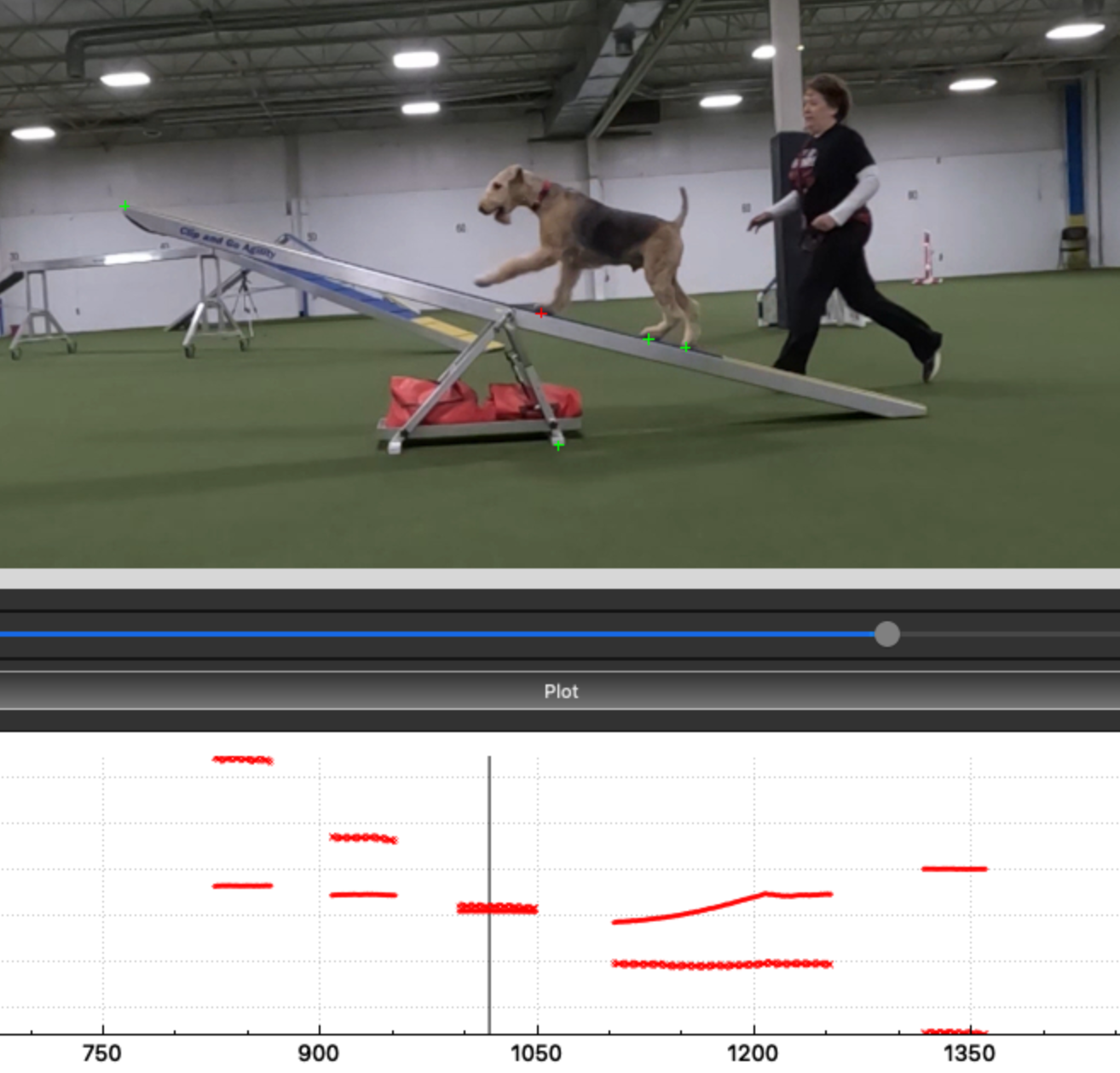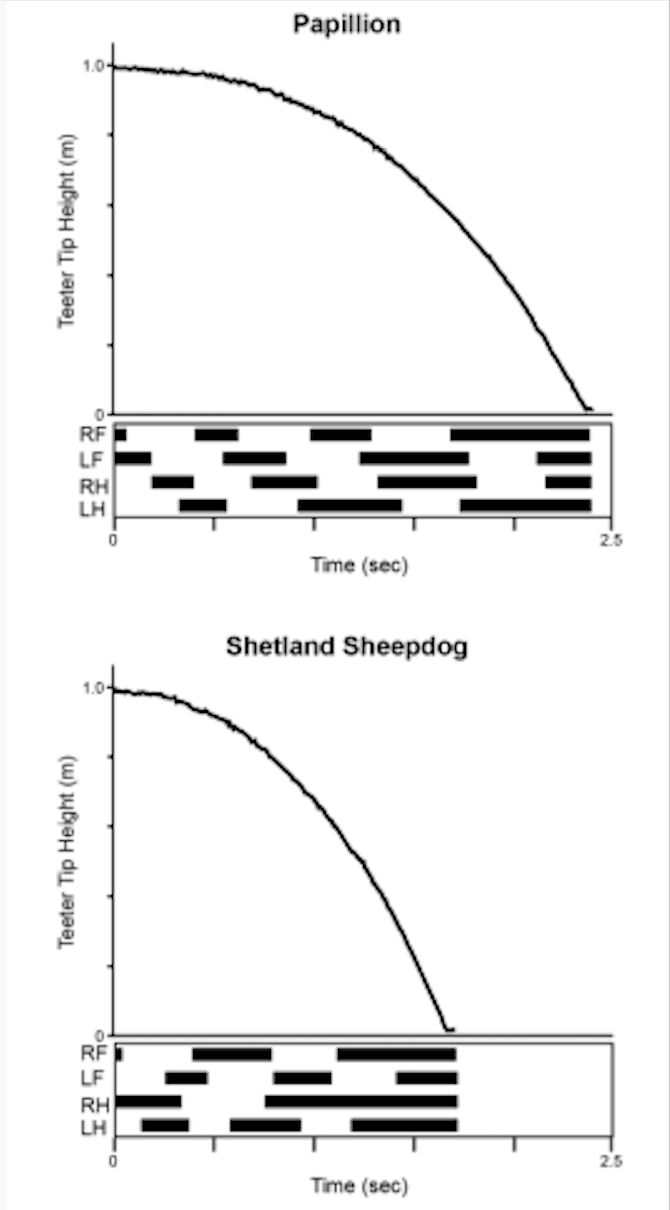Tiered Mentoring Program
Markless Motion Capture for Evaluation of Biomechanical Strategies in Canine Agility Teeter Performance
Dr. Rachel Olson and Moriah Wood
 Research background:
Research background:
Canine agility has grown in popularity over the last decade. While entries to American Kennel Club agility events have increased by 38%, the rate of performance-related injuries has increased from 32% in 2009 to 41.7% in 2019. Currently, there are not many studies evaluating the biomechanics and performance of canines completing agility courses, specifically regarding the teeter obstacle. Further study could provide insight into how injury rate may be affected by performance variables.
Project details:
Goal: To analyze teeter descent, paw placement, and performance of dogs completing the teeter obstacle course.
Methods: 22 dogs of different breeds and sizes were recorded, and videos will be tracked in XMALab manually. The fore paws and hind paws will be tracked when in contact with the plank. The data will begin at the first stride prior to touching the plank, to the first stride off the plank.
 Benefits for the Student:
Benefits for the Student:
Learn about the basic principles of biomechanics, canine agility, and motion capture
Receive training on video processing techniques through various software programs, including XMALab and VirtualDub.
Participants have the potential to gain experience in science communication and public speaking, scientific writing, data management, and statistical analysis through presentations.
Qualifications:
We are looking for an undergraduate student of any major who is excited and willing to learn the above skills. Prior computer modeling experience is not required, and we are happy to teach you everything you need to know! If you are interested in learning more about canine agility, biomechanics, and motion capture, please consider joining our research.
